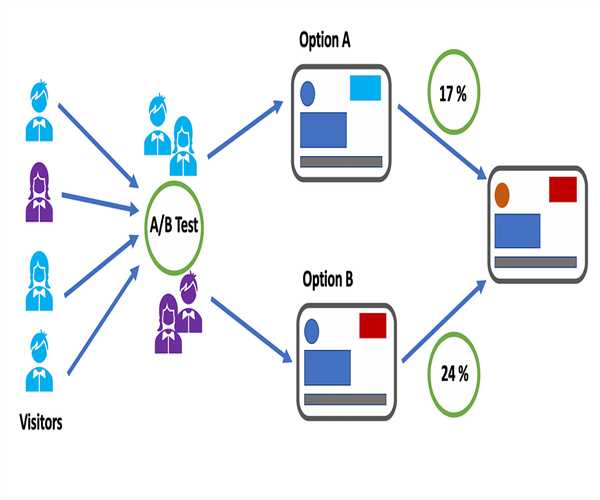A/B testing is a powerful tool for improving the performance of a website. It is a type of experiment in which two versions of a web page are compared against each other to determine which one performs better. This method is often used to test various elements of a web page, such as the design, content, layout, and functionality, to identify which version drives more conversions, engagement, or user satisfaction.
In an A/B test, the two versions of the web page, called variant A and variant B, are randomly presented to different segments of the website's visitors. The traffic is split equally between the two variants, and each visitor is assigned to one of the versions. Then, the visitors' behavior and actions are tracked and compared to measure the effectiveness of each variant. A/B testing is usually conducted for a specific period of time to ensure a statistically significant sample size.
The purpose of A/B testing is to determine which version of the web page is more effective in achieving the website's goal, such as increasing sales, generating leads, or improving engagement. A/B testing allows website owners to make data-driven decisions by providing insights into which design, layout, or content resonates better with their audience.

For example, an e-commerce website might want to test two different product pages to see which one drives more sales. Variant A could be the original product page, while variant B could be a modified version with a different product image, a more prominent call-to-action button, and a shorter product description. The website would then track how many visitors from each variant added the product to their cart and completed the checkout process.
A/B testing is also useful for optimizing different elements of a web page, such as the headline, the font size, the color scheme, or the navigation menu. By testing different variations of these elements, website owners can identify the combination that resonates the most with their audience and leads to better user experience and engagement.
To conduct an A/B test, website owners need to use an A/B testing tool or software, such as Google Optimize, VWO, or Optimizely. These tools allow website owners to create and launch A/B tests easily, track visitor behavior, and analyze the results.
However, it's essential to conduct A/B testing with care and avoid common pitfalls, such as testing too many variations at once, not testing long enough, or drawing conclusions from inconclusive results. It's also crucial to have a clear hypothesis and a well-defined goal before conducting an A/B test and to use the results to inform future improvements to the website.
In conclusion, A/B testing is a valuable technique for optimizing a website's performance by comparing different versions of a web page and identifying which one performs better. By using A/B testing, website owners can make data-driven decisions, improve user experience, and increase conversions and engagement.